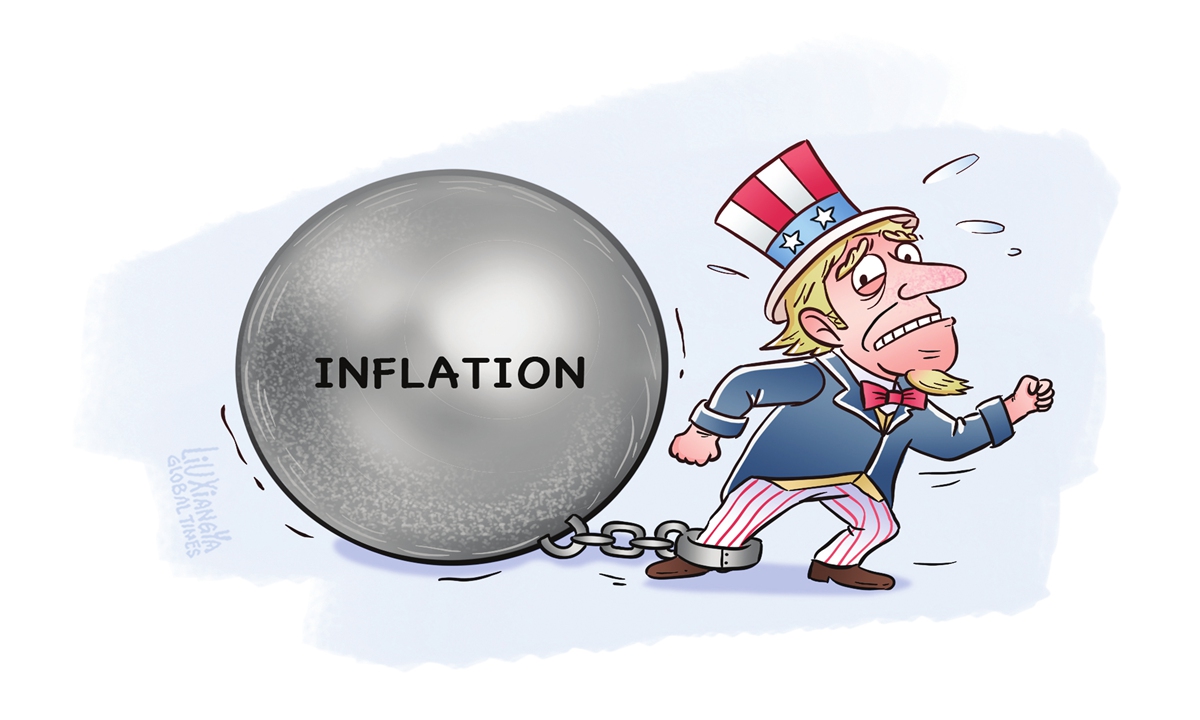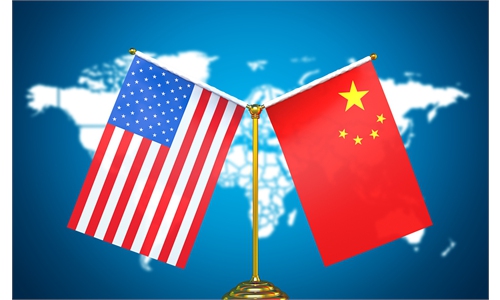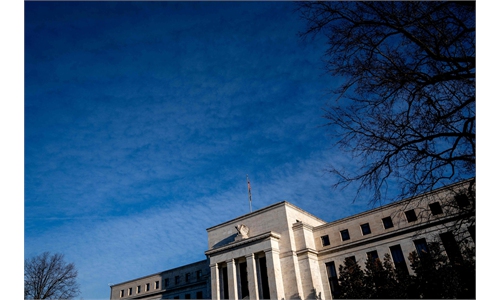
Illustration: Liu Xiangya/GT
The US capital market seems to have run into uncharted territory as investors waiting for the Federal Reserve's first interest rate cut in nearly two years are getting news of "a double whammy" - the US economic growth is slowing significantly, while inflationary pressures are persisting. It once again proves that financial and economic variables rarely move in the same straight line.
Economists say it is very difficult for an overheated economy to achieve the so-called soft landing, or equilibrium between controlling inflation and maintaining a modest level of economic growth.
In the first three months of 2024, the US economy slowed to 1.6 percent annualized growth, a much weaker pace than expected by the market. Meanwhile, its inflation rate measured by CPI rose to 3.5 percent in March, much higher than February's 3.2 percent. After the announcement, the Dow Jones industrial average fell by 375 points or 1 percent on Thursday. The index wobbled on Friday, failing to find a clear direction.
It is still too early to tell whether the US economy has waded into stagflation - a halt in growth while stuck with in elevated consumer prices, though US unemployment remains low. But there are growing signs that investors' soft-landing hopes are fading as an economic recession seems to be quietly chipping in, induced by the US Federal Reserve's "extremely restrictive" 5.25-5.50 policy rates. With that high borrowing cost, business investment and domestic consumption would slough off.
Now, the US bank borrowing costs have surged to levels "they had not reached in many decades," which is ramping up anxiety among ordinary Americans about the cost of financing major purchases, from auto vehicles to houses. Investors also see a greater chance of a prolonged period of high interest rates than they did a month ago, which is almost certain to push down stock prices.
Policymakers at the Federal Reserve want to see inflation start coming down, but so far have only seen growth slight and prices remain elevated, which is bad news for increasingly skittish equity investors. The soft-landing, a scenario in which inflation goes back to the Fed's 2 percent target sustainably without a recession is not in sight any time soon. Some claim that US inflation may never fall back toward its 2 percent target range without triggering a recession.
Elevated costs for fuel, housing, dining and clothing have driven up inflationary pressures. Analysts warn that the lack of progress in curbing inflation in the past many months will force the Federal Reserve to keep interest rates higher for longer. Actually, spiking prices for food staples, gasoline and housing rent constitute a subtle way of imposing a new inflation tax on average American families.
Earlier this year, investors expected 5 or 6 interest rate reductions by the US central bank this year, but the sticky inflation numbers have pushed investors to slash their expectations to only one cut in 2024. CPI, a major gauge of inflation, in the US rose faster than expected in March, in a sign that the fight to tame inflation has largely stalled. There is a risk that the Fed may have to hold the current policy rates steady till 2025.
For some time, some institutions have insisted that there was virtually no impact on US economic growth or the broader credit conditions from the Federal Reserve's highly restrictive monetary policy. But that hypothesis has been proved wrong. Now the US economy is feeling the pinch of the Fed's protracted cycle of policy tightening.
And, as the balance of risks surrounding economic growth and inflation has shifted, American equity markets have pulled back recently from the all-time highs reached earlier this year. If the US central bank refuses to end its tightening cycle by cutting policy rates, the economy is likely to land on rocks, sending shockwaves across financial markets.
It is a fraught time for Federal Reserve policymakers, because they remain unsettled on whether they still need to take measures to further water down the economy for inflation to fall meaningfully, or whether the "immaculate influence" of productivity and other factors will do the job.
US inflation has come down a long way from its 40-year peak of 9.1 percent in June 2022, but still many key electoral swing states said they believe inflation is going the wrong way. Even the Fed officials are divided over how effective their policy tightening has curbed credit growth and tame inflation. They seem to have got a conundrum on their hands.
While the Fed is expected to cut interest rates later this year, recent economic data and persistently sticky inflation has prompted some economists to forecast the cuts could come in the first quarter of 2025, which is almost certain to dampen investor confidence and market morale. To make matters worse, investors are also beset by the rekindled concern about the negative impact of the massive US federal deficits, which has surpassed $34 trillion now.
Facing mounting challenges, Biden administration officials need to take time to think what exactly has led to stubbornly high inflation in the first place. Although the Fed has changed course by raising interest rates to 5 percent, Washington's punitive trade and technology protectionism against China remains in place.
The author is an editor with the Global Times. bizopinion@globaltimes.com.cn



